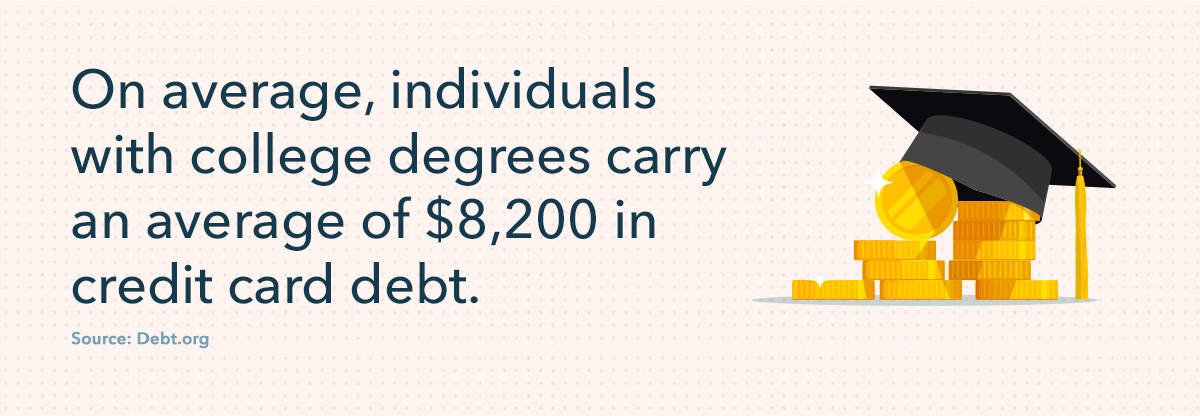Credit Card Debt: 5 Ways to Pay It Off: There are numerous methods for paying off credit card debt, ranging from simply paying more than the minimum amount due each month to employing a technique such as a snowball method. The ideal option for you will depend on the severity of your debt, your interest rate, and how much you can reasonably afford to pay.
Did you know that consumer credit card debt increased by $17 billion in the second quarter of 2021 alone? It’s true that more Americans are suffering from credit card debt than ever before. With many Americans out of work and struggling to make ends meet as consumer costs increase and salaries stagnate, it’s no surprise that people are charging more stuff to their credit cards to put food on the table.
If you’re in credit card debt, it can feel like you’re attempting to dig your way out from beneath a mountain with no idea how to get out of credit card debt. There is no such thing as a one-size-fits-all solution, but you do have options. In this post, we’ll walk you through five different ways to pay off your credit card debt. Continue reading to learn about the best ways to pay off debt and improve your financial situation.
What Exactly Is Credit Card Debt?
What Is the Average American’s Credit Card Debt?
What Is an Excessive Credit Card Debt?
How to Get Rid of Credit Card Debt
What Happens If You Do Not Pay Off Your Credit Card Debt?
What Exactly Is Credit Card Debt?
Before we go into how to pay off credit card debt, let’s first define it.
You’re essentially taking out a modest short-term loan when you use a credit card. The terms of that loan require that it be paid off by the end of each month. So, if you put $900 on your credit card to cover gas, groceries, and going out, you’ve essentially taken out a $900 loan for that month’s expenses that you’ll need to pay back before your due date—which is usually listed on your online credit card portal or on the email or physical statement you receive from your credit card company.

When you do not pay off your credit card bill each month, credit card debt begins to grow. Even if you make the minimum payment (typically a tiny percentage of the total amount owed, such as $30 or $50), the remaining debt will begin to accrue interest. Assume you owe $500 on your credit card and pay down $100. The remaining $400 will continue to accrue interest. If your interest rate is 15%, you’ll owe $460 from your remaining balance plus interest on your next statement.
What makes it much more difficult for many credit card holders is that interest accumulates. That implies that the next time interest is calculated on your balance, it will be applied to the $460 total rather than the $400 principal amount. It’s simple to see why so many Americans become indebted so quickly, especially since many people choose to pay the minimum rather than the full amount they may owe.
What Is the Average American’s Credit Card Debt?
According to Transunion, the average bank credit card balance in the second quarter of 2021 was $4,817. The average American has roughly $90,000 in debt, which includes everything from credit cards to college loans and homes.

The amount of credit card debt a person is likely to carry is determined by a number of factors, including:
Individuals with college degrees have an average credit card debt of $8,200.
People who did not attend college have an average credit card debt of $4,700.
Generation X has the most total debt—around $140,000 per individual.
With a total debt of under $16,000, Generation Z has the lowest overall debt.
Credit card debt, along with school debt and mortgage debt, is one of the most common causes of debt for many Americans.
What Is an Excessive Credit Card Debt?
A small amount of credit card debt can be handy for making purchases that you would otherwise be unable to make. However, if you begin to notice any of the following symptoms, you may have too much credit card debt.
You are merely making the bare minimum payment. If you merely make the minimum payment each month, your credit card debt will grow as interest is added to the balance. If you keep doing this month after month, you may find yourself in more debt than you can bear.
You have a high credit use rate. Credit usage is the percentage of your total credit lines that you are currently using. For example, if your credit card has a $5000 limit and you’ve currently used $4000, your credit utilisation rate is high. Many experts recommend that you keep your credit utilisation under 30% whenever possible.
Credit cards are used to pay off other credit cards. This is a potentially hazardous cycle. If you’re using many credit cards to pay off one another, it’s an indication that you’ve taken on more than you can handle.
Your debt-to-income ratio is very high. Another essential ratio to monitor is your debt-to-income ratio, which compares the amount you now owe to the amount of money you bring in. Your credit card debt is probably too high if your debt payments constitute a big (or the largest) amount of your monthly income.
Ultimately, regardless of how much credit card debt you have, the payments and interest can be a substantial drag on your financial life. Next, let’s look at several debt-reduction strategies.

How to Get Rid of Credit Card Debt
Here are some of the top credit card debt-relief methods and tricks. Keep in mind that there is no simple solution—the only way to pay off credit card debt is to pay it off gradually over time. However, these tips can assist in making it more tolerable.
Increasing your payment above the bare minimum
It can be tempting to pay only the minimum on your balance rather than the entire amount owed each month. When you make the payment, it appears like the debt simply disappears… until the following month, when you are reminded of the amount you truly owe.
If you’ve been paying the minimum and your balance has been increasing, this is an indication that you should stop. If you can’t pay off the entire balance right away, that’s fine—just begin by paying more than the bare minimum, whatever that may be.
The snowball technique
So you’ve started paying more than the minimum—congratulations! However, you may now want to concentrate on how you address your debt. There are two common techniques: snowball and avalanche. In the snowball method, you start with the smallest debt and work your way up. Begin by paying off the credit card with the smallest total balance. Once it is paid off, use that money and begin paying off the next smallest debt. Continue doing so until all of your credit cards are paid off. To prevent incurring late fees, continue to make minimum payments on all of your other credit cards.

The avalanche technique
In the avalanche strategy, you begin by paying off the highest-interest-rate credit card debt. High-interest rates can be crippling, so attacking the card with the highest interest rate first will have the greatest impact on your finances in the long run. Furthermore, you will avoid paying long-term interest on the largest amounts.
It is important to note that the goal here is to pay off the balance with the highest interest rate, not the highest balance. Attempting to pay off the biggest balance first implies that interest is still accruing on all of your other balances, which means you’ll owe more in the long run.
Consolidating your debts with a personal loan
Sometimes your debt is simply too much for you to bear, especially with the exorbitant interest rates on credit cards. One method for obtaining credit card debt relief is to obtain a personal loan with a lower interest rate and then utilise the loan proceeds to pay off credit card debt.
Personal loans frequently feature better terms and lower interest rates than credit cards. They are available from banks and credit unions and can be an efficient solution to consolidate mountains of credit card debt into a single, more manageable monthly payment. If you have a lot of debt, try consolidating credit card debts from many sources into a single personal loan.
Making a better budget
Finally, budgeting is a valuable component to any repayment approach. Knowing how much you’ll pay toward your debt each month makes it easier to plan your budget around your monthly debt payments. You’ll also get a fair idea of how long it will take you to pay off your debt.
Mint makes budgeting simple. By using the Mint app, you can create easy-to-follow monthly budgets as well as track your spending, income, and net worth—all in one place.
How to Work Out a Credit Card Debt
Your credit card provider may be willing to negotiate your debt in some instances. They may, for example, waive previous late penalties, reduce your interest rate, or even allow you to settle by making an offer that is less than the total debt that you currently owe.
It doesn’t hurt to try—if you’re deeply in debt, consider contacting your credit card provider and discussing your options. Negotiating may result in a better offer. Worst-case scenario, they’ll simply say no.
What Happens If You Do Not Pay Off Your Credit Card Debt?
If you don’t pay off your credit card debt, your balance will merely grow, making it more difficult to ever break free from the debt cycle. This not only harms your finances by asking you to spend a significant amount of your monthly income on debt payments. It might also drastically harm your credit score, making it more difficult to obtain loans and new credit cards in the future.

When You Die, What Happens to Your Credit Card Debt?
Credit card debt is passed on to your spouse or heirs after you die. It does not suddenly disappear, thus it is best to focus on repaying your debt while you are still alive.
Paying Off Credit Cards Can Help You Achieve Financial Freedom
Now that you’ve identified a few ways for paying down your credit cards in the most effective manner for you, it’s time to get started. You can prepare for a brighter, less stressful financial future by focusing on paying off your credit cards today. While you may have to cut back on spending, for the time being, it will pay off in the long term when your discretionary money isn’t being eaten up by credit card costs.
Once you’ve decided on a debt repayment strategy, utilise Mint to help you construct a budget that allows you to set aside extra money to pay off your credit cards.
Federal Reserve Bank of New York | Transunion Credit Industry Insights Report for Q2 2021
The post Credit Card Debt: 5 Ways to Pay It Off appeared first on MintLife Blog.
The post Credit Card Debt: 5 Ways to Pay It Off appeared first on https://gqcentral.co.uk






Comments are closed